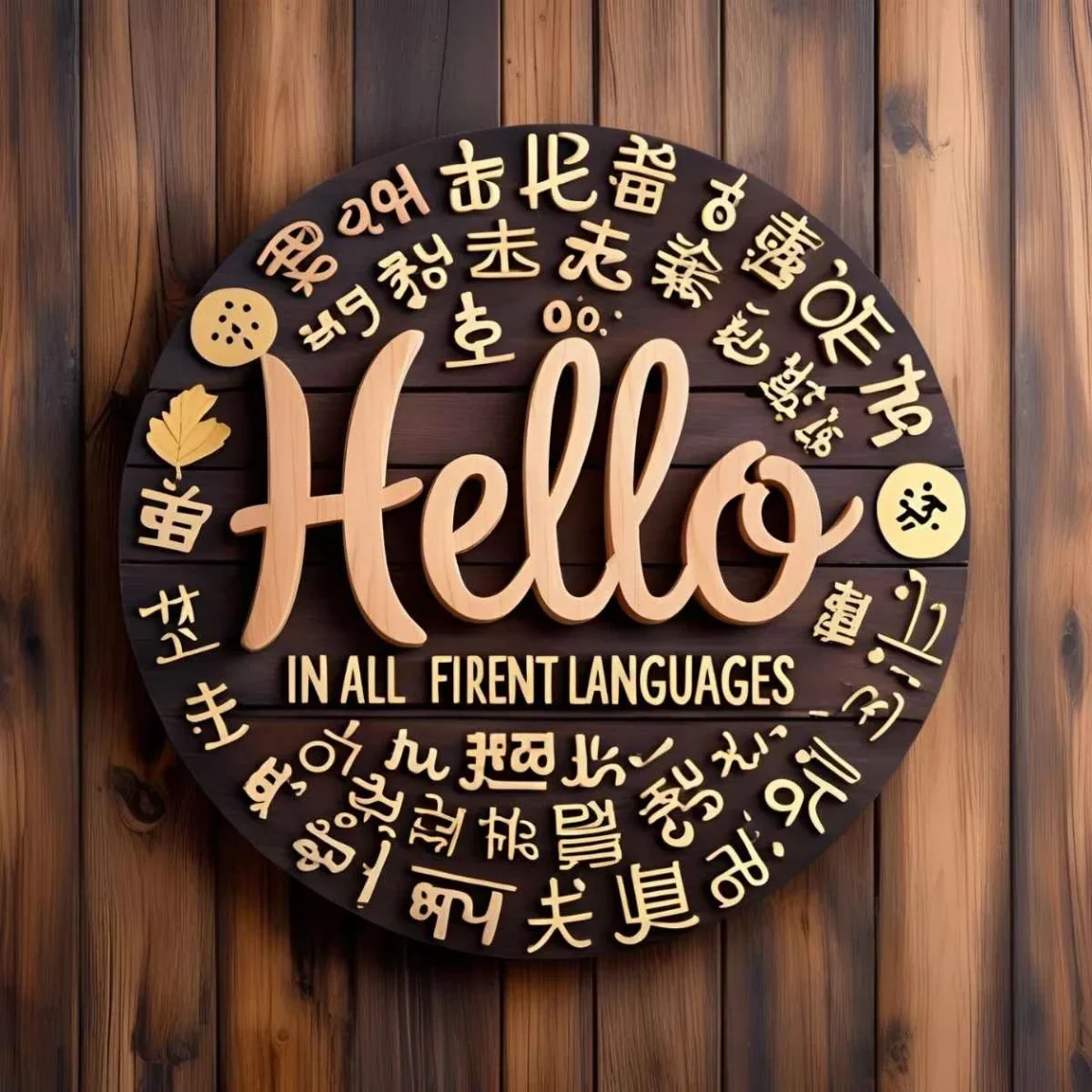Imagine standing in a vibrant market in Marrakech, where a shopkeeper beams and says “Marhaba” to welcome you. Or picture a quiet morning in Kyoto, where a passerby nods with a soft “Konnichiwa.” These simple greetings, though different, carry the same warmth—a universal invitation to connect.
The word “hello” opens doors to conversations and friendships worldwide, shaped by each culture’s unique spirit. Let’s journey across the globe to explore how people say “hello” in various languages and discover the cultural heart behind these greetings.
Reference Table: “Hello” in Different Languages
| Language | Word/Phrase | Cultural/Linguistic Insight |
|---|---|---|
| French | Bonjour | Means “good day,” used formally and casually in France. |
| Spanish | Hola | A versatile greeting used across Spain and Latin America. |
| Italian | Ciao | Informal, used for both “hello” and “goodbye” in Italy. |
| German | Hallo | Straightforward and common, reflecting German directness. |
| Mandarin | Nǐ hǎo (你好) | Literally “you good,” used politely in China. |
| Hindi | Namaste | Means “I bow to you,” a respectful greeting in India. |
| Japanese | Konnichiwa (こんにちは) | Means “good afternoon,” used broadly during the day. |
| Korean | Annyeonghaseyo (안녕하세요) | A polite greeting, showing respect in South Korea. |
| Arabic | Marhaba (مرحبا) | Means “welcome,” used warmly across 20+ Arab countries. |
| Swahili | Habari | Often paired with “nzuri” (good), common in East Africa. |
| Zulu | Sawubona | Literally “I see you,” a personal greeting in South Africa. |
| Yoruba | Bawo ni | Means “how are you,” used in Nigeria as a friendly hello. |
| Maori | Kia ora | Means “be well,” a warm greeting in New Zealand. |
| Hawaiian | Aloha | A versatile term for love, peace, and greeting in Hawaii. |
| Cherokee | Osiyo | A traditional greeting, expressing warmth in Native American communities. |
European Languages: Warm Welcomes Across the Continent
European greetings reflect a blend of formality and friendliness. For instance, in French, “bonjour” (good day) is used in both casual and formal settings, often paired with a smile in Parisian cafés. Meanwhile, Spanish speakers say “hola,” a versatile greeting that fits any occasion, from bustling Madrid streets to rural Latin American villages. Additionally, Italian’s “ciao” is informal and doubles as “goodbye,” embodying Italy’s relaxed charm. In contrast, German’s “hallo” is direct and practical, mirroring the culture’s straightforward nature. Whether in a Berlin office or a Roman piazza, these greetings invite connection with a touch of cultural flair.
Asian Languages: Respectful and Poetic Greetings
Asia’s diverse languages offer unique ways to say “hello,” often tied to respect and tradition. For example, in Mandarin, “nǐ hǎo” (you good) is a polite greeting used across China, reflecting a focus on well-being. In Hindi, “namaste” carries spiritual depth, meaning “I bow to you,” and is often accompanied by a prayer-like gesture in India. Similarly, Japanese speakers use “konnichiwa” (good afternoon) during the day, a polite nod to time-specific etiquette. Meanwhile, Korean’s “annyeonghaseyo” conveys respect, commonly used in Seoul’s bustling streets. Finally, Arabic’s “marhaba” (welcome), spoken in over 20 countries like Egypt and the UAE, radiates hospitality, rooted in the region’s tradition of generous welcomes.
These greetings showcase Asia’s range, from the spiritual “namaste” to the hospitable “marhaba,” each fostering connection in its own way.
African Languages: Greetings That Build Community
In Africa, saying “hello” often strengthens communal bonds. For instance, Swahili’s “habari,” used in over 20 countries like Kenya and Tanzania, is often followed by “nzuri” (good), inviting a brief exchange about well-being. In Zulu, “sawubona” (I see you), spoken in South Africa, acknowledges the other person’s presence deeply, fostering respect. Similarly, Yoruba’s “bawo ni” (how are you), common in Nigeria, serves as a warm greeting that sparks conversation. These terms, spoken in vibrant markets or quiet villages, reflect Africa’s emphasis on community and shared humanity.
Indigenous & Island Languages: Greetings Rooted in Connection
Indigenous and island languages offer greetings that emphasize harmony and connection. For example, Maori’s “kia ora” (be well), used in New Zealand, conveys a wish for health and goodwill. In Hawaiian, “aloha” is more than a greeting—it embodies love, peace, and community, shared across the islands. Similarly, Cherokee’s “osiyo” is a warm welcome, used in Native American communities to express respect. In Samoan, “talofa” radiates friendliness, reflecting Pacific islanders’ communal spirit. Across these cultures, from New Zealand to the Cherokee Nation, greetings foster deep connections, often tied to shared values of respect and unity.
Cultural Insights: The Evolution of Greetings
The word “hello” has evolved with cultural exchanges. For instance, in ancient Rome, “salve” (be well) was a common greeting, influencing modern European terms. In Arabic, “marhaba” traces back to medieval hospitality traditions, shaping its use across the Middle East. Moreover, in African cultures, greetings like “sawubona” carry spiritual weight, rooted in rituals that honor presence. In Asia, terms like “namaste” reflect ancient philosophies, blending respect and spirituality. These greetings are more than words—they’re bridges to history, carrying traditions from ancient marketplaces to modern cities.
Proverbs and Sayings: Wisdom of Greetings
- French: “A good word opens all doors.” This highlights the power of a kind greeting.
- Hindi: “First meet with a smile, then with words.” It emphasizes warmth in greetings.
- Swahili: “A greeting is the key to friendship.” This reflects the role of greetings in connection.
- Japanese: “Words of greeting bring hearts closer.” It captures the emotional bond of hellos.
- Yoruba: “A kind hello builds a home.” This ties greetings to community.
FAQs
Why do some greetings sound similar across languages?
Languages with shared roots, like Indo-European (French, Spanish) or Semitic (Arabic, Hebrew), often have similar greetings. Cultural exchanges also spread terms, like Arabic’s influence on Swahili.
What’s the oldest known greeting?
Latin’s “salve” (circa 1st century BCE) is among the earliest recorded, meaning “be well.”
How do cultures shape greetings?
Collectivist cultures (e.g., African, Indigenous) use greetings to build community, while individualistic cultures (e.g., European) focus on personal acknowledgment.
Conclusion
From “hola” in Spain to “habari” in Tanzania, the word “hello” weaves a global tapestry of connection. Each greeting, whether the respectful “namaste” in India or the warm “aloha” in Hawaii, reflects cultural values while celebrating our shared humanity. Consequently, these simple words remind us that a single “hello” can spark friendships across borders. How do you say “hello” in your language, and what stories do your greetings hold? Share your experiences below—we’re excited to hear from you!





